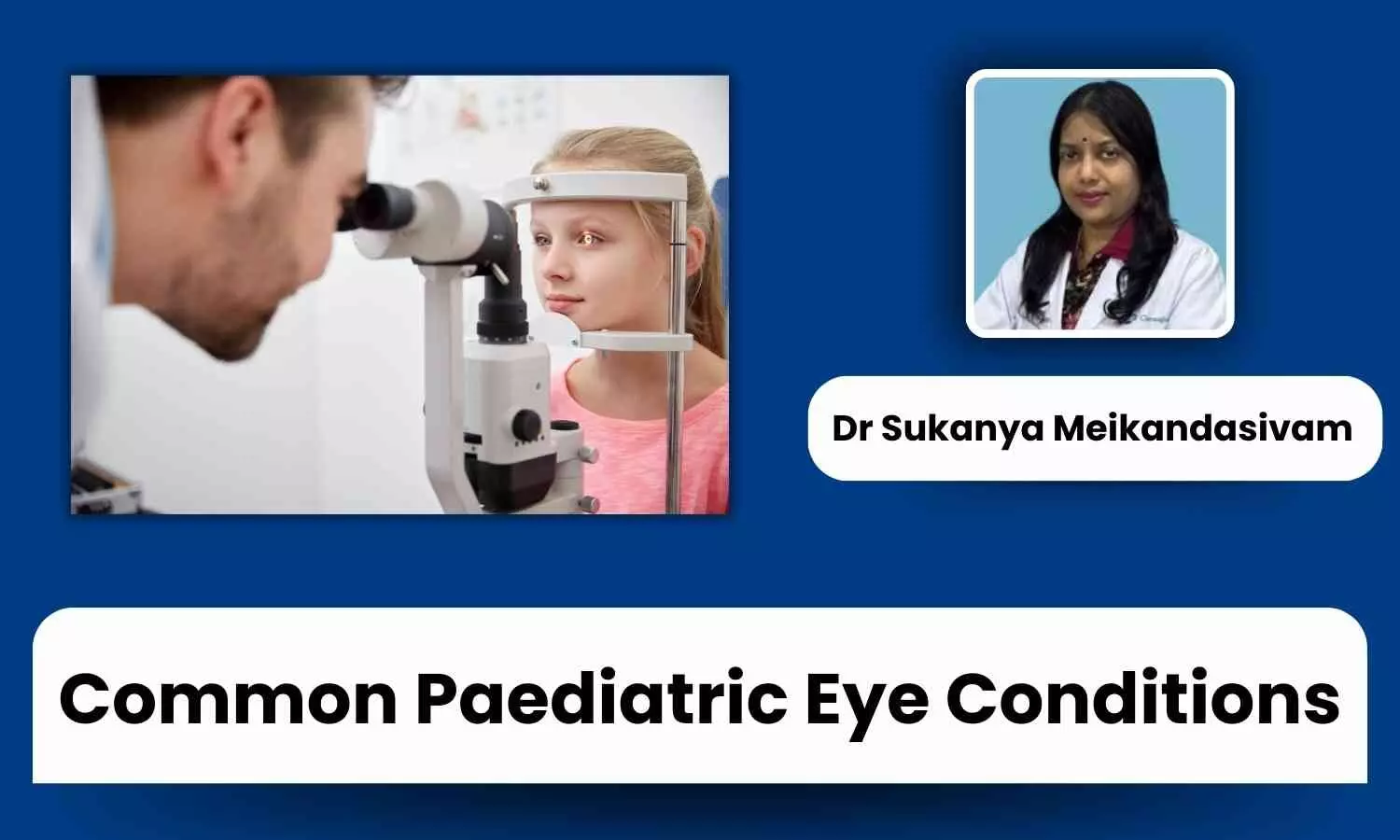Common Paediatric Eye Conditions: Strabismus, Amblyopia, and More - Dr Sukanya Meikandasivam

Paediatric eye health is a cornerstone of a child's overall well-being, significantly influencing their academic success, social interactions, and self-confidence. Alarmingly, studies reveal that nearly 6.8% of children under 18 suffer from vision-related issues, with 1 in 4 children under 10 exhibiting symptoms that could indicate eye problems.
Since approximately 80% of classroom learning is visual, any impairment can disrupt a child’s ability to grasp essential concepts, leading to learning difficulties. In fact, 60% of children with learning challenges have underlying vision problems that can impact their academic progress and overall development.
Symptoms of Eye Problems in Children
Recognizing the early signs of eye issues in children is critical for timely intervention. Parents and caregivers should be attentive to the following symptoms, which may indicate an underlying eye condition:
1. Persistent complaints of discomfort, eye pain, or itchiness.
2. Frequent blinking or rubbing of the eyes, especially during activities like reading or screen time.
3. Signs of blurry vision, redness, or watery eyes that persist.
4. Frequent headaches, which may be due to eye strain.
5. Holding books or electronic devices unusually close to the eyes.
6. Difficulty in reading, reduced attention span, or squinting.
Timing of Eye Examinations
Routine eye examinations play a vital role in detecting and addressing paediatric eye conditions before they become severe. The recommended timeline for eye check-ups includes:
1. At birth, particularly for high-risk newborns, to identify congenital eye issues.
2. Between 0 to 6 months of age, to monitor eye development.
3. At 3 to 3.6 years, when vision problems can start affecting learning.
4. At 6 years of age, as children begin their formal education.
5. Annually during school years to ensure ongoing eye health.
Common Paediatric Eye Conditions
Strabismus (Squint Eyes):
Strabismus, commonly referred to as squint eyes, is a condition where the eyes are misaligned, with one eye pointing in a different direction from the other. While a squint in newborns is often normal and usually resolves within the first few months of life, a persistent horizontal squint beyond 4 months requires further evaluation.
If left untreated, the brain may suppress the image from the misaligned eye to avoid double vision, leading to a reliance on the straight eye. Early intervention is crucial for restoring proper eye alignment, binocular vision, and depth perception, which are essential for a child’s visual development.
Amblyopia (Lazy Eye):
Amblyopia, or lazy eye, is often a consequence of untreated strabismus or uncorrected refractive errors. When detected early, amblyopia responds very well to treatment, significantly improving the affected eye's vision.
However, if the condition is identified late, the vision loss may become irreversible. While treatment is most effective in younger children, older children can still see improvements with consistent and diligent treatment.
Refractive Errors
Refractive errors, including near-sightedness, far-sightedness, and astigmatism, occur when the eye's shape prevents light from focusing correctly on the retina. These errors can cause difficulty in seeing clearly at various distances.
If refractive errors are not corrected, they can lead to amblyopia and significant vision impairment. Unfortunately, children often do not realize they have blurry vision, as they may believe their vision is normal, particularly when both eyes are used together.
Childhood Blindness Due to Vitamin A Deficiency
Vitamin A deficiency is the leading cause of preventable childhood blindness worldwide. Every year, an estimated 250,000 to 500,000 children in developing countries go blind due to insufficient vitamin A intake. A diet rich in vitamin A is crucial not only for preventing blindness, but also for supporting overall eye health and development in children.
Conclusion
Paediatric eye conditions such as strabismus, amblyopia, and refractive errors have far-reaching effects on a child’s life if left untreated. Early detection and consistent treatment are key to preserving vision and supporting healthy development.
Regular eye exams should be prioritized to catch issues early, and symptoms of potential problems should not be ignored. Additionally, ensuring a diet rich in vitamin A can prevent severe conditions like childhood blindness, giving children the best opportunity to thrive both academically and socially.


